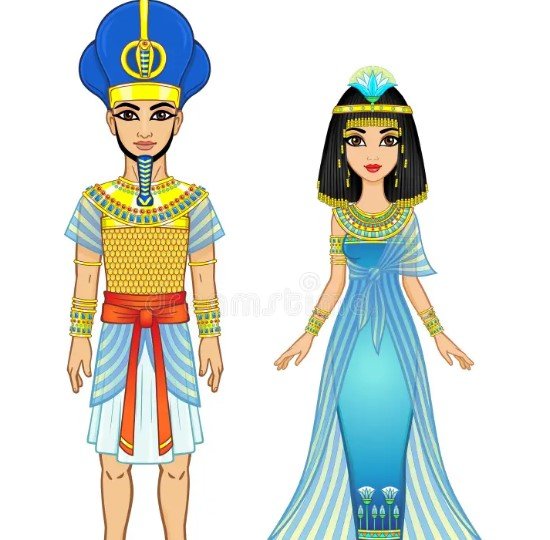In a fascinating twist of history, an ancient Egyptian prince named Khaemwaset explored and restored ruins from his own civilization over 3,000 years ago. Known as the world’s first Egyptologist, this son of Pharaoh Ramesses II delved into forgotten tombs and monuments during the 13th century BCE, blending magic, priesthood, and a passion for the past.
Who Was Prince Khaemwaset?
Prince Khaemwaset entered the world around 1281 BCE as the fourth son of the legendary Pharaoh Ramesses II and his queen Isetnefret. Egypt at that time already held a deep history, with pyramids and temples standing for centuries before his birth.
Raised in a royal court amid wars and grand building projects, Khaemwaset showed early talent. He trained in the priesthood of Ptah, the god of craftsmen and creation. By his thirties, he rose to high priest, a role that gave him access to vast temple libraries filled with ancient records.
His life overlapped with major events, like his father’s long reign and battles against neighbors. Khaemwaset even joined military campaigns, as shown in carvings where he fights alongside his brothers.

Scholars today praise him for his curiosity. He read old inscriptions and worried about crumbling sites. This drive set him apart in a era when most focused on the present.
His Groundbreaking Work in Restoration
Khaemwaset did not just study history; he acted on it. He led efforts to repair and mark ancient structures across Egypt, especially in the Memphite necropolis near modern-day Cairo.
He restored the pyramid of Unas from the Fifth Dynasty, adding inscriptions to honor the past king. He also worked on the Step Pyramid of Djoser, one of Egypt’s oldest stone monuments.
His teams cleared sand from the Great Sphinx and fixed temples dedicated to earlier pharaohs. These acts preserved sites that might have vanished otherwise.
Experts say his work showed respect for ancestors. Inscriptions he left often noted the original builders, like this one on a pyramid: “The Setem priest Khaemwaset restored this monument for its owner.”
- Key sites he restored include the pyramids of Giza and Saqqara.
- He identified and labeled tombs of long-forgotten rulers.
- His efforts influenced how later Egyptians viewed their history.
In 2025, archaeologists uncovered new details about similar royal tombs in Saqqara, echoing Khaemwaset’s own explorations. These finds highlight how his methods still inspire digs today.
The Magician and Storyteller Legacy
Beyond restoration, Khaemwaset gained fame as a wise magician in later tales. Stories from the Hellenistic period portray him as Setne Khamwas, a hero who enters tombs seeking magic books.
One popular tale describes him finding the Book of Thoth in a prince’s tomb, leading to curses and adventures. These stories mix fact with fiction, showing his real-life tomb explorations.
His reputation lasted centuries. People remembered him as a sage who could read ancient scripts and perform spells. This image shaped views of Egyptian magic in literature.
Modern books and films draw from these legends. For example, some adventure stories echo his quests into forbidden ruins.
| Aspect of Legacy | Description | Modern Impact |
|---|---|---|
| As Archaeologist | Restored over a dozen monuments | Inspires current Egyptology practices |
| As Magician | Featured in tales like Setne I | Influences fantasy novels and movies |
| As Priest | High Priest of Ptah | Links religion with historical preservation |
| Cultural Memory | Remembered for 2,000 years | Boosts tourism to sites like Saqqara |
This table shows how his life blended roles that still resonate in 2025.
Ties to Recent Discoveries
Fresh archaeological news in 2025 brings Khaemwaset back into focus. Teams in Saqqara found a 4,000-year-old tomb with a fake granite door, belonging to another prince. While not his, it mirrors the sites he studied.
Experts like Zahi Hawass note similarities to Khaemwaset’s work. His inscriptions appear on nearby structures, suggesting he explored the area.
These finds tie into global interest in Egypt’s past. Museums worldwide display artifacts linked to him, and online discussions on platforms buzz with his story.
His approach laid groundwork for today’s field. Modern tools like ground-penetrating radar build on his hands-on methods.
Why His Story Matters Today
Khaemwaset reminds us that curiosity about history is timeless. In an age of rapid change, his passion for preserving the old offers lessons on cultural heritage.
Educators use his example to teach about ancient Egypt. His life shows how one person can bridge eras.
As Egypt plans more excavations in 2025, his legacy encourages ethical archaeology. It stresses respect for the dead and accurate recording.
Share your thoughts on this ancient pioneer in the comments below, and pass the article to friends interested in history. What other forgotten figures deserve the spotlight?
